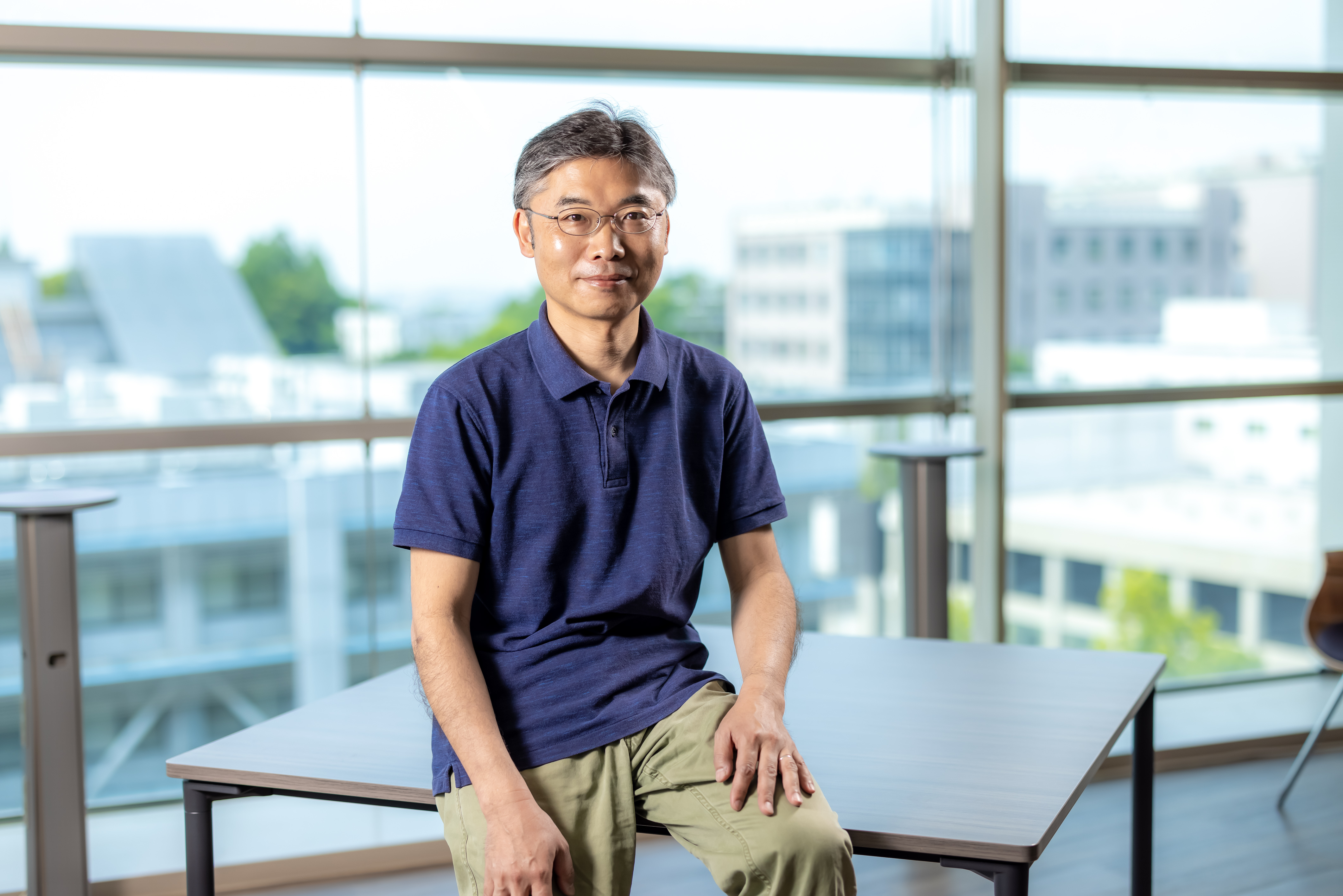
Dr. Hajime Yoshino, Associate Professor, Cyber Media Center
"Looking inside the blackbox – A physicist’s passion for pursing uncovered truths, from condensed matter to deep neural networks"
Dr. Hajime Yoshino is a theoretical physicist specializing in condensed matter physics, which connects microphysics with macrophysics. He strives to advance the understanding of physics of disordered solid states like glasses, an enigma among states of matters.
Diversity and universality of jamming
Glass, while hard like crystalline solids, differs from crystals in that it is amorphous on the molecular scale. Because of this structural disorder, each piece of glass is technically out of equilibrium, and therefore unique.
The ideal method of densely packing spheres in a box (i.e., packing spheres as closely together as possible) has been debated for quite some time. While it is known that spheres can be packed uniformly to take up a maximum of 74% of the box’s volume according to a prediction by J. Kepler in the 17th century, the corresponding limit for random packing (just imagine pouring sands or small steel balls into a box) is thought to be around 64% based on research by Bernal and Mason in 1960. However, recent research has revealed that randomly-packed jamming states (i.e., those that cannot be packed anymore) can be obtained in various densities depending on how the initial state is created before compression is started. Jamming is an important phenomenon that governs the mechanical properties of high-density soft matter used in our daily lives, such as mayonnaise and toothpaste.
Dr. Yoshino, in collaboration with Dr. Yuliang Jin at the Chinese Academy of Sciences, performed extensive computer simulations to generate and examine random packing of spheres and demonstrate [1] that, unlike the crystalline close packing of spheres, random close packing or jamming of spheres in a container can take place in a broad range of densities and anisotropies. Furthermore, they showed that such diverse jammed states are all just marginally stable and exhibit common universal critical properties. This work may shed light on the physics of amorphous materials and optimization problems in computer science, which are intimately related to the mathematics of sphere packings.

Fig: Configuration of a hard-sphere glass close to jamming. For a comparison, the close packing structure of the crystalline structure (FCC) is also presented on the righthand side.
Intrigued by undiscovered truths
Physics is a discipline in which researchers strive to uncover the mysteries of the world.
As a theorist, Dr. Yoshino uses statistical mechanics, a powerful mathematical toolbox useful not only for physics but also in a broader range of fields including computer science and biology. It allows one to theoretically understand the behavior of a large number of constituents (particles, data, cells, animals, ...) interacting with each other starting from physical laws or any basic rules which govern the behavior of the individual constituents. Because of its highly interdisciplinary character, statistical mechanics may allow one to transfer ideas and results obtained in one discipline to discover something new in a seemingly quite different discipline. Indeed, somewhat surprisingly, the statistical mechanics of glasses are intimately related to problems in computer sciences and biology such as optimization problems and neural networks.
Dr. Yoshino is now developing a statistical mechanical approach based on the replica method to study the design space of deep and wide neural networks constrained to meet a large number of training data [2]. Actually, this work is rooted in the ideas and theoretical results obtained in his studies of glass physics. Machine learning by DNN has seen success in numerous applications. However, it remains challenging to understand exactly why DNNs work so well, making them mysterious black boxes. Dr. Yoshino sees the potential in statistical mechanics to “un-blackbox” DNN opening avenues for controlling and/or designing DNNs in rational ways.
International networks of collaborations
Dr. Yoshino spent his time as a postdoctoral researcher in France and has been engaged in a large-scale global research network in theoretical physics with researchers from about 10 countries around the world, particularly with a group of physicists from Paris and its surroundings. The joint paper [1] he published this time was in collaboration with Dr. Yuliang Jin, who spent his post-doctoral study with Dr. Yoshino. Dr. Yoshino sees much potential in expanding his research network within Asia in the coming years. Dr. Yoshino is a member of the Cybermedia Center, which provides opportunities for constructing international collaborations using high performance super-computing facilities, namely OCTOPUS and SQUID.
[1] Yuliang Jin and Hajime Yoshino. (2021). A jamming plane of sphere packings. Proceedings of the National Academy of the United States of America .118(14). e2021794118.
https://doi.org/10.1073/pnas.2021794118
[2] Hajime Yoshino. (2020). From complex to simple: hierarchical free-energy landscape renormalized in deep neural networks. SciPost Physics Core. 005.
DOI: 10.21468/SciPostPhysCore.2.2.005
Text: Saori Obayashi/Edit: Christopher Bubb
